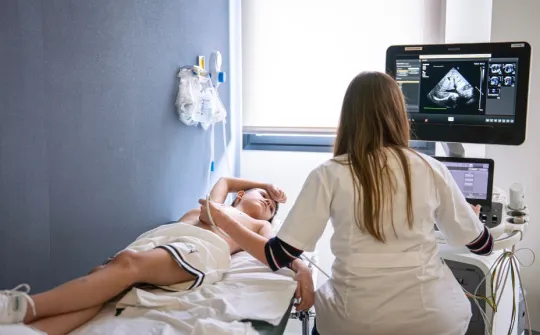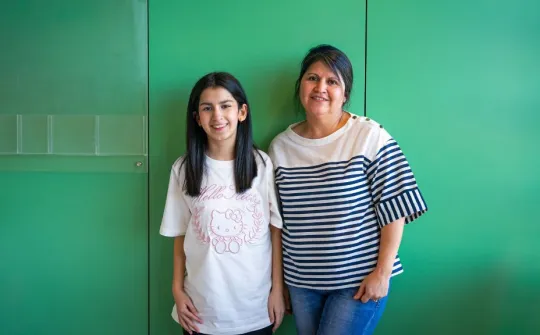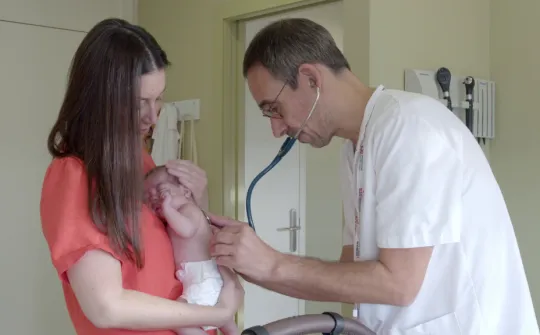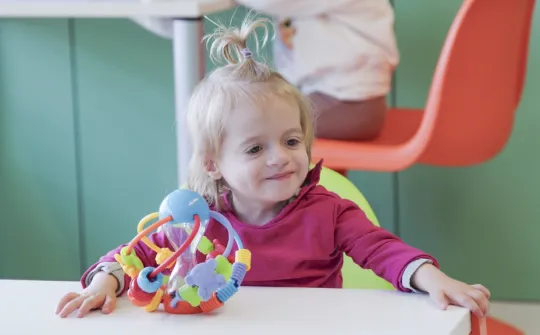"The prognosis of patients with retinoblastoma is very good in developed countries, but not in the rest of the world"
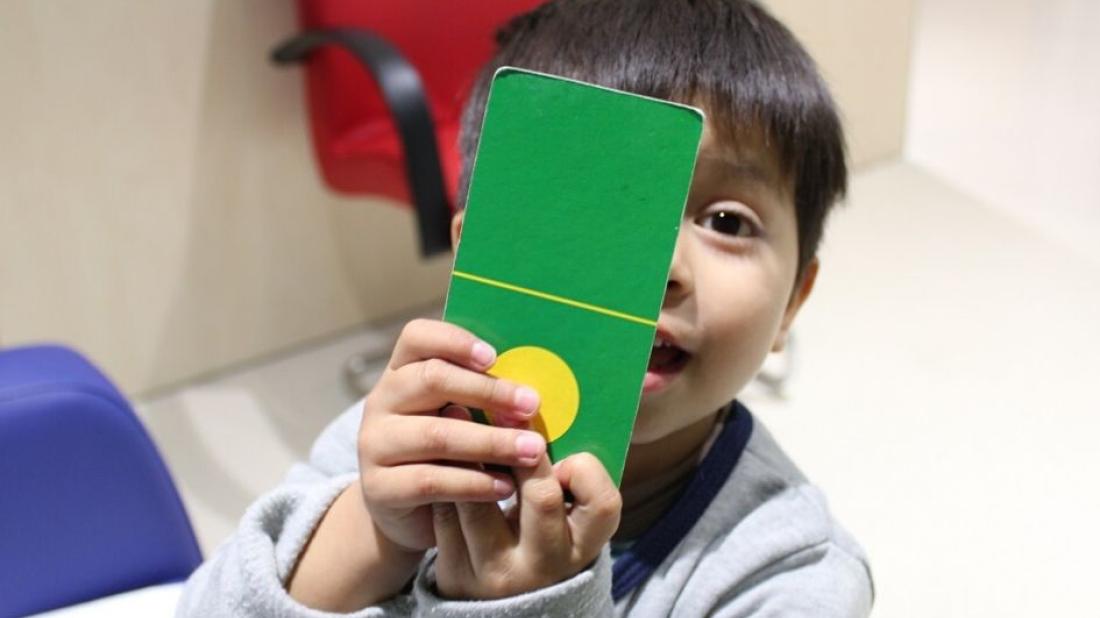
This is the first patient to be officially treated by the Pediatric Cancer Center Barcelona, a case of retinoblastoma treated with intra-arterial chemotherapy.
Retinoblastoma is a tumour of the eye affecting babies and toddlers and is the most common type of eye cancer in childhood. It is diagnosed in approximately one in 15-18,000 newborns. This disease can occur in one or both eyes and typical signs include a white reflection on the pupil when light is shone in the eye, or that one eye seems to be looking in a different direction from the other.
In Douglas' case, the retinoblastoma showed the typical symptoms and was bilateral, affecting both eyes. When he was just three months old, his parents noticed that there was something wrong with their little boy's sight and the diagnosis was made shortly after.
Due to progression of the disease, the hospital in his home country of Guatemala decided on enucleation (removal) of the little boy's left eye, as the cancer was very advanced. Douglas continued under the supervision of his medical team which, according to his mother Katherine, could not provide proper treatment due to lack of resources. "Over these years we have been battling to save the other eye, but the cancer continued to progress until it was at a very advanced stage and they advised us to come here", says Katherine.
Treatment with intra-arterial and intravitreal chemotherapy
Douglas was three when he arrived at SJD Barcelona Children's Hospital through the solidarity programme PCCB Charity Fund, as his own hospital could not give him the treatment he needed: intra-arterial chemotherapy.
Pediatric ophtamologist Jaume Català Mora explains that Douglas still had some vision in his right eye, which so far had been saved, and so the challenge was to keep that vision without endangering his life. In this eye he also had one larger tumour, the main one, and numerous small tumours.
"To attack the large tumour he was given intra-arterial chemotherapy: in this treatment a catheter is inserted as far as the ophthalmic artery and chemotherapy is applied within the eye. It is a very effective therapy for this type of tumour", says Català, also adding that intravitreal chemotherapy was used for the small tumours. Douglas responded well to both treatments applied by the SJD Barcelona Children’s Hospital Pediatric Oncology team, and they were able to keep the tumours inactive.
"The prognosis of patients with retinoblastoma is very good in developed countries, but not in the rest of the world, and early detection and treatment and the skills of the attending physicians, particularly the ophthalmology team, are therefore critical for the diagnosis, treatment and monitoring of these patients", explains Català. "It is important to stop the retinoblastoma from progressing to prevent risk to the patient's life", the oncologist adds.
Katherine, who is very satisfied with the treatment, says, "When he got here, my son had a very advanced disease and couldn't see well, he would trip over everything, he couldn't be left alone. Now he goes to the park, he can play and walk on his own without needing to be guided. Now we'll continue with the treatment and the follow-up consultations in Guatemala. We're leaving very happy".
SJD Barcelona Children's Hospital assesses 10 to 15 cases of retinoblastoma a year and is conducting research into new therapies for this eye cancer. Since 2008, more than ninety patients have been treated with intra-arterial chemotherapy, with an overall survival rate at five years of 99%. The success rate for patients with bilateral involvement is 99%.
